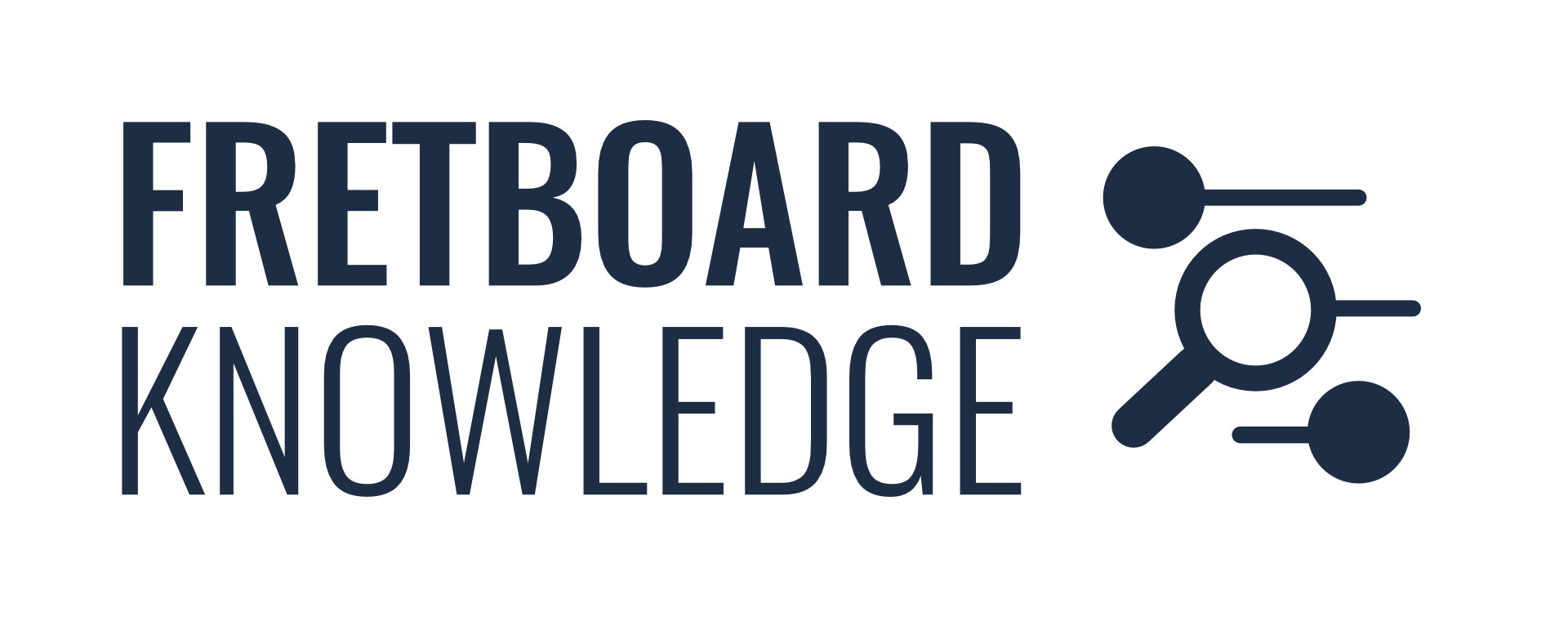Within the Fretboard Knowledge domain, we loosely define chords as "three or more pitched sounds played simultaneously".
In Western music theory, common chords are generally built by stacking minor and major third intervals.In Fretboard Knowledge, "common chords" means our list of all strict and non-strict triads and seventh chords.
Strict triads and seventh chords are the chords obtained by stacking three or four minor or major thirds and thus have the tone-functions prime, third, fifth (and seventh).
Non-strict triads and seventh chords are chords where these intervals have been suspended or augmented in such a way that the interval-stack does not consist of only minor and major third intervals.
Strict Triads
There are four strict triads, meaning that these are constructed by stacking notes in intervals of thirds:
Diminished
Symbols: mb5, -b5, dim
Functions: 1-b3-b5
Minor
Symbols: m, -, min
Functions: 1-b3-5
Major
Symbols: (no symbol), M, maj
Functions: 1-3-5
Augmented
Symbols: +, aug, #5
Functions: 1-3-#5
Non-Strict Triads
| Name | Common Symbols | Functions |
|---|---|---|
| sus2 | sus2 | 1 2 5 |
| sus4 | sus4 | 1 4 5 |
| Major (b5) | (b5) Mb5 Maj-5 | 1 3 b5 |
Strict Seventh Chords
There are six seventh chords that confirm to the principle of stacking thirds.
Three more seventh chords are relevant but these are not conceived by strictly stacking intervals of a third, but they all have definite alterations of the essential chordtones.
| Name | Common Symbols | Functions |
|---|---|---|
| Diminished | o dim7 |
1 b3 b5 bb7 |
| Half diminished | Ø m7b5 -7b5 min7b5 mi7b5 |
1 b3 b5 b7 |
| Minor seventh | m7 -7 min7 mi7 |
1 b3 5 b7 |
| Minor major seventh | mΔ -Δ minΔ miΔ minMaj7 mMaj7 |
1 b3 5 7 |
| Dominant seventh | 7 dom7 |
1 3 5 b7 |
| Major seventh | Δ Maj7 Ma7 M7 |
1 3 5 7 |
| Major seventh raised fifth | Δ+ Δ#5 Maj7#5 Maj7+ |
1 3 #5 7 |
Non-Strict Seventh Chords
| Name | Common Symbols | Functions |
|---|---|---|
| Altered dominant | 7+ 7#5 7alt |
1 3 #5 b7 |
| Dominant with flattened fifth | 7b5 | 1 3 b5 b7 |
| Major seventh with flattened fifth | Δb5 Maj7b5 Δ#11 (incorrect, but good looking) |
1 3 b5 7 |

